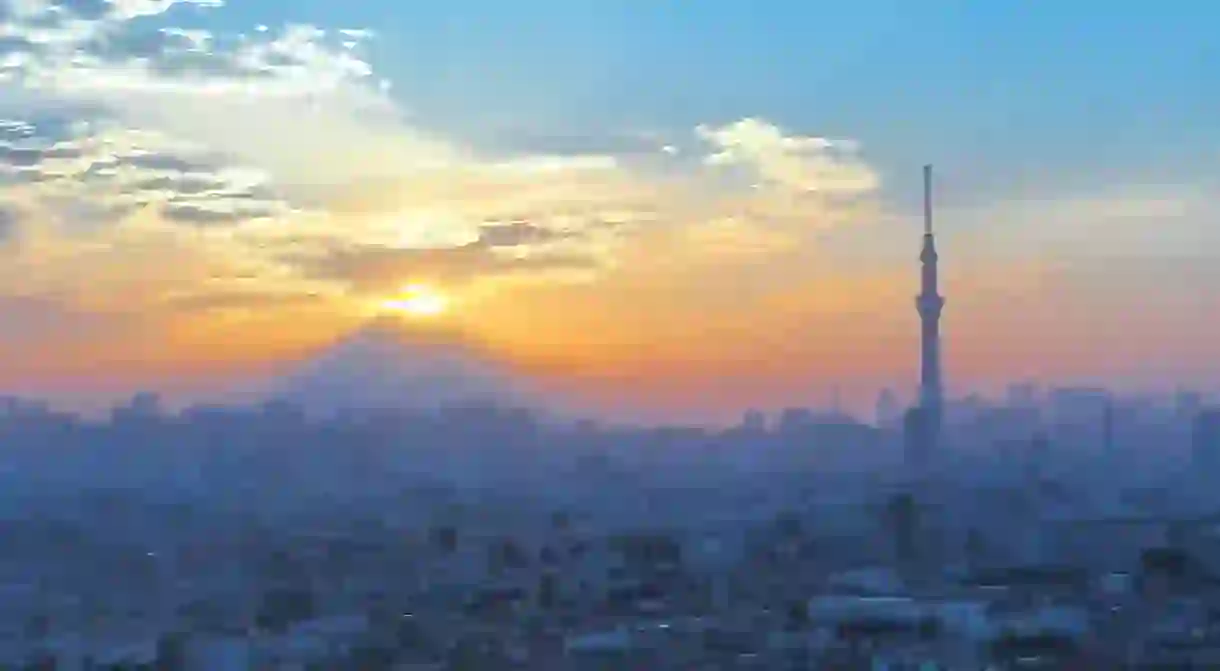An Adventure Traveller’s Guide to Four Days in Japan

With Mount Fuji in the backdrop, Tokyo has the call of the wild within earshot. Zoom a little out of the city skyline and there’s an abundance of lakes, hot springs and hikes in areas such as the Fuji-Hakone-Izu National Park. They’re easy to reach, too, with the high-speed rail running frequently to the area. We round up the best spots here to connect with nature on a short break.
Day one: Tokyo to Hakone
On your first day, take the Odakyu Romancecar from Tokyo to Hakone (roughly 80 minutes); this high-speed train is one of the easiest and fastest ways to travel in the area and by purchasing the Fuji Hakone Pass, you can get three days of discounted travel. (You’ll need to purchase an express ticket in addition to the train ticket when using the Romancecar, and do check the eligible areas for the pass in advance.) Part of the Fuji-Hakone-Izu National Park and close to Mount Fuji, Hakone is best known for its abundance of hot springs and lakes, as well as the Hakone Shrine – the most famous Shinto shrine in the region.

Due to volcanic activity in the area, Hakone is one of the most popular hot-spring resorts in Japan, with more than a dozen springs feeding into bath-houses – Hakone-Yumoto is among the best. Take a full day unwinding and relaxing in nature, with nearby Mount Fuji, the highest mountain in Japan and an active volcano, as your backdrop. Spend the night at the peaceful Kijitei Hoeiso, a traditional ryokan-style accommodation with a hot spring and outdoor onsen bath, which sits by a river in the mountains.

Day two: Hakone to Lake Kawaguchiko
After a restful night’s sleep at Kijitei Hoeiso, take the bus to Kawaguchiko, changing at Gotemba. At Kawaguchiko you can use your Fuji Hakone Pass to explore the Fuji Five Lakes region by bus or train. The shores of Lake Yamanakako, the largest of the five lakes, border Yamanakako Hananomiyako Park, a 30ha (70-acre) flower field that bursts into colour between spring and autumn each year. Just south of the lake is Mishima Yukio Literary Museum, an independent institution dedicated to the works of one of Japan’s leading cultural icons. For the more adventurous, there are plenty of water-based activities to enjoy, such as stand-up paddleboarding, an experience that takes a leisurely two or three hours.

A 40-minute bus ride north will bring you to Lake Kawaguchiko, whose northern shores are among the best spots to see the cherryblossom in mid-April, and where an antique music-box museum, vintage organs and live performances can be discovered in the nearby Kawaguchiko Music Forest Museum. And just under an hour away by bus is the PICA Fujiyama, a campsite where you can stay the night, in aptly named Amazing Domes, tents or trailer cottages.

Day three: Lake Kawaguchiko to Nishi-Izu
From here, travel south along Mount Fuji towards Asagiri Highland in Fujinomiya city, stopping to sightsee at Lake Tanukiko, just north of the city. This peaceful lake is a popular place for campers, where you can fish or take a gentle walk or bike ride around its perimeter. A few days either side of April 20 and August 20, you can witness a natural phenomenon called Diamond Fuji here, which occurs when the sun rises over the peak of Mount Fuji. Stroll south along the Sheba River towards the city centre, stopping on the way at the Shira-Ito waterfall, set in lush surroundings and spread wide across the rocks. Shiraito Natural Park, another beauty spot well worth a visit, is also close by.

After sightseeing, make your way by train to Nishi-Izu, a small beach town on the Izu peninsula. Affectionately nicknamed Sunset Town, this is an ideal spot to see the sunset as the hot springs here have views of the ocean. Once the sun’s gone down, head to LOQUAT Nishiizu, an old mansion restored as a ryokan with only two rooms; there’s an open-air bath on the terrace, plus a spa, bakery and restaurant serving Italian food with wines to match.

Day four: Nishi-Izu to Mishima
After a relaxing morning at LOQUAT Nishiizu, make your way up to Mishima to take the Shinkansen bullet train, which is not covered by your Fuji Hakone Pass, back to Tokyo (trains run every 30 minutes). Once you’re in the city, take a stroll along the Mishima Skywalk, a huge suspension bridge spanning a valley, where you can enjoy panoramic views of Mount Fuji. There is a café attached to the bridge, with several menus using local ingredients, in case you want to fuel up before your return to the capital.

Want to explore the culture of Japan for yourself? Start by purchasing your tickets for the Fuji Hakone Pass, and your tickets for the Shinkansen bullet train.













